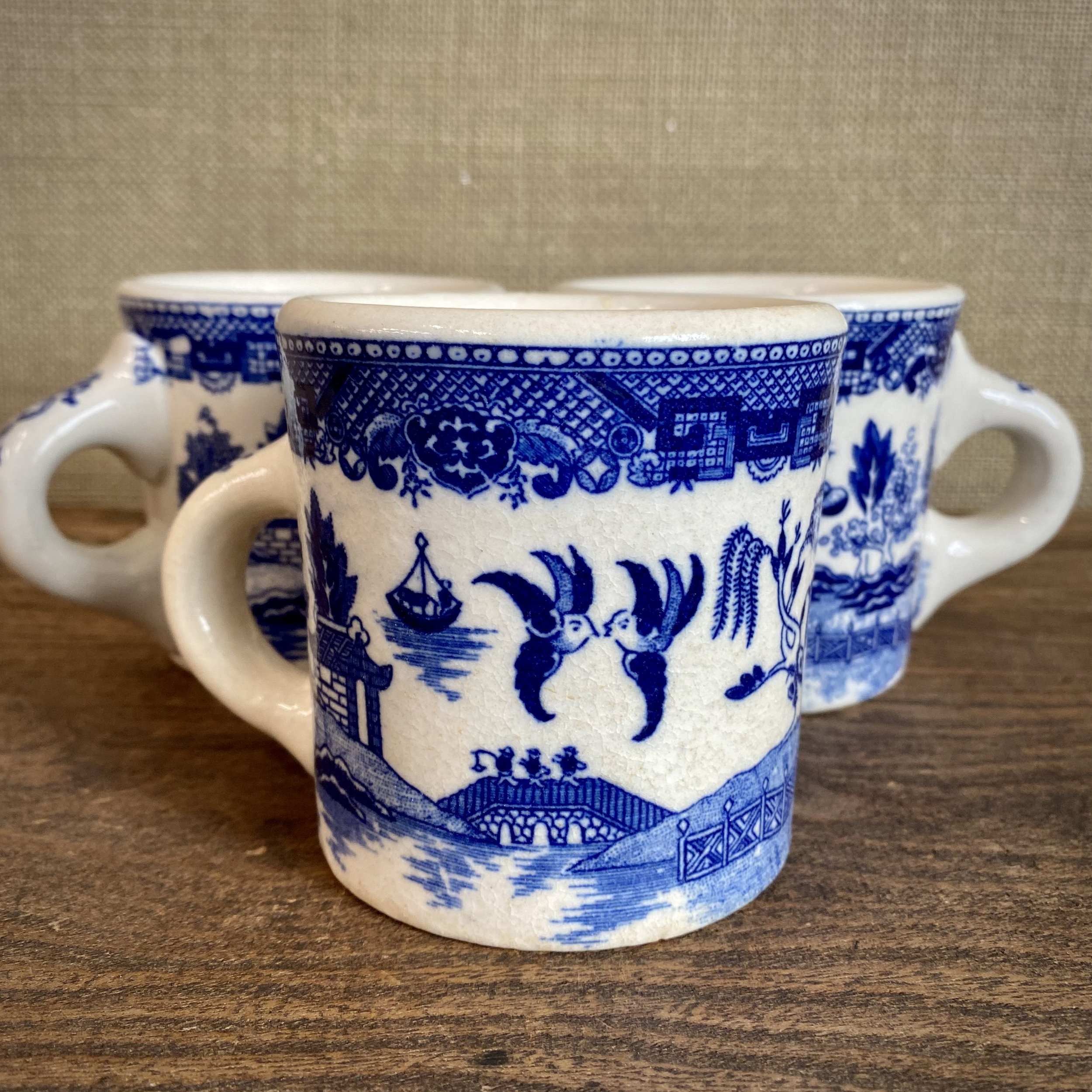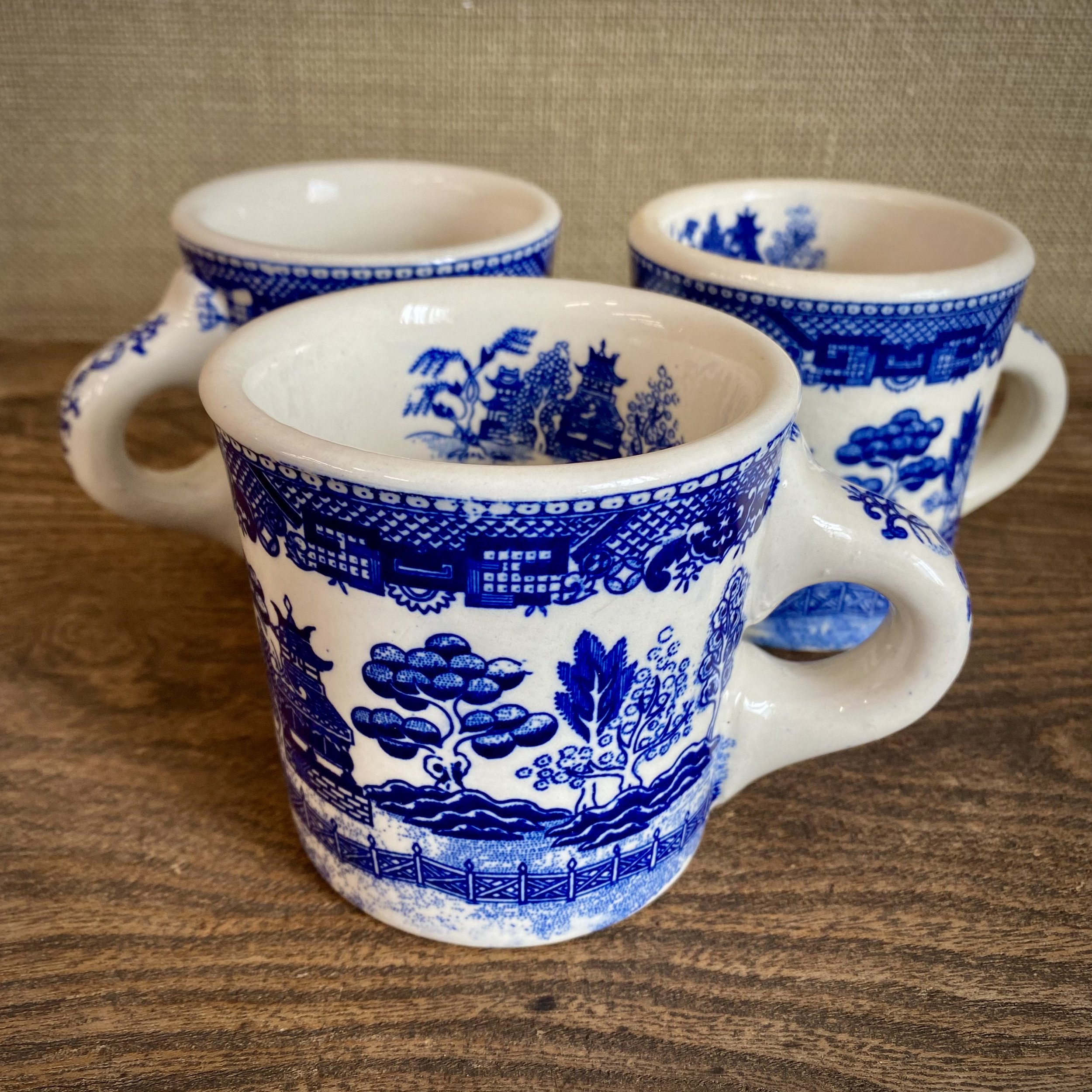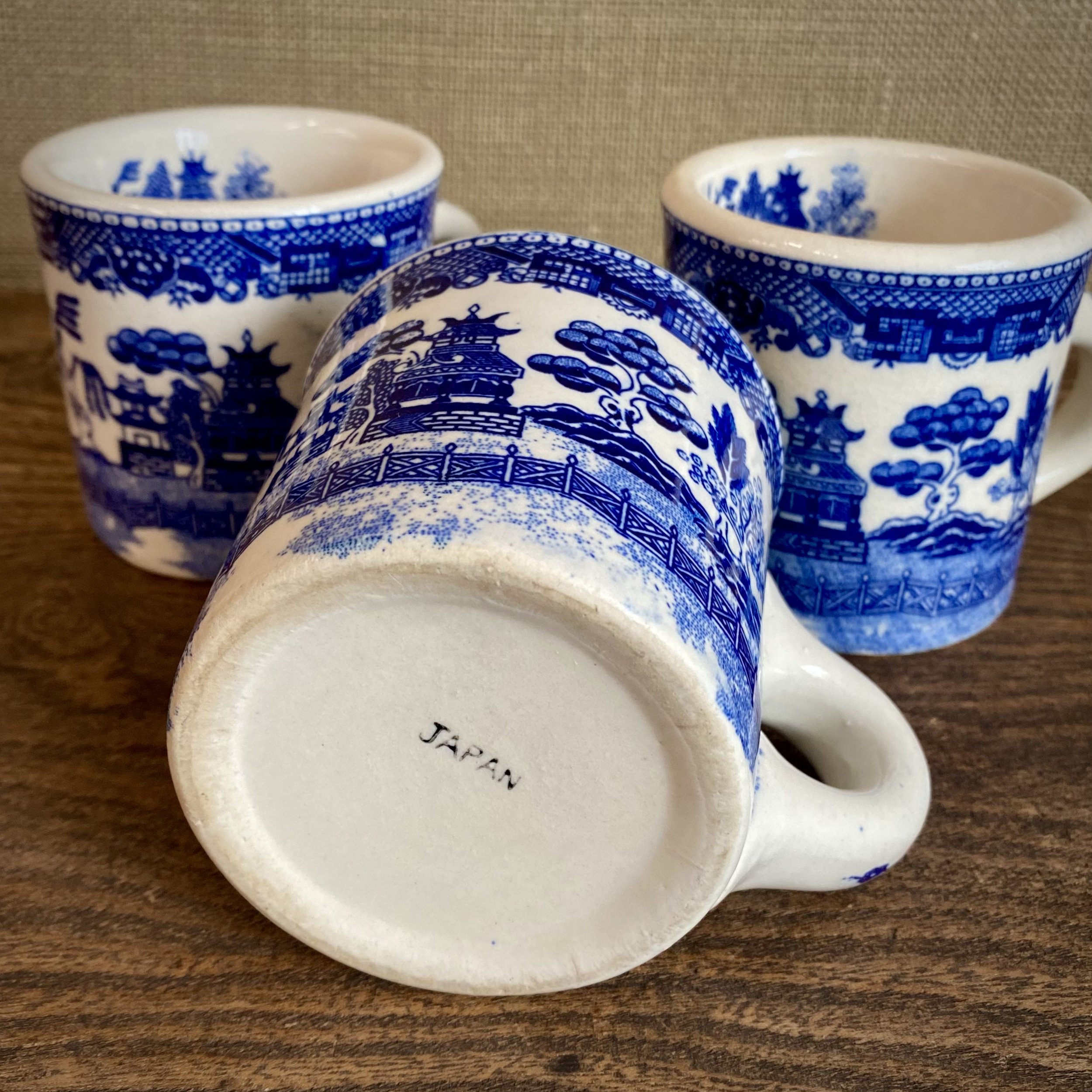 Image 1 of 3
Image 1 of 3

 Image 2 of 3
Image 2 of 3

 Image 3 of 3
Image 3 of 3




Willow Pattern Mugs
The Willow Pattern is a complex chinoiserie pattern, created by English craftsmen in the late 18th century, a time when china with printed glaze transfers was beginning to be mass-produced in Britain. The pattern is as an adaptation of traditional Chinese blue-and-white decoration, combining and condensing many different patterns. For some reason, the Willow Pattern has survived them all, and remains in use 200 years later.
This may be because it came with a good story. It involves the lovely daughter of an ambitious Mandarin. She is in love with a lowly clerk, but her father promises her instead to a cruel duke. The young couple elopes, living happily for a while on a secluded island, until — alas!— they are hunted down by the duke, and killed. However, the gods take pity on the doomed lovers, and transform them into doves. Though possibly based on traditional stories (such as the Japanese fairy tale The Green Willow), this version first appeared in print in the 1840s, long after the Willow Pattern was in production. No matter! The story took root in popular culture, and has appeared in numerous books, an opera, even a silent film.
The Willow Pattern usually appears on “fine” China, so it’s amusing to see it reproduced on these heavy coffee mugs. These were made for export in Japan, probably intended for restaurant use. Set of three mugs.
The Willow Pattern is a complex chinoiserie pattern, created by English craftsmen in the late 18th century, a time when china with printed glaze transfers was beginning to be mass-produced in Britain. The pattern is as an adaptation of traditional Chinese blue-and-white decoration, combining and condensing many different patterns. For some reason, the Willow Pattern has survived them all, and remains in use 200 years later.
This may be because it came with a good story. It involves the lovely daughter of an ambitious Mandarin. She is in love with a lowly clerk, but her father promises her instead to a cruel duke. The young couple elopes, living happily for a while on a secluded island, until — alas!— they are hunted down by the duke, and killed. However, the gods take pity on the doomed lovers, and transform them into doves. Though possibly based on traditional stories (such as the Japanese fairy tale The Green Willow), this version first appeared in print in the 1840s, long after the Willow Pattern was in production. No matter! The story took root in popular culture, and has appeared in numerous books, an opera, even a silent film.
The Willow Pattern usually appears on “fine” China, so it’s amusing to see it reproduced on these heavy coffee mugs. These were made for export in Japan, probably intended for restaurant use. Set of three mugs.
The Willow Pattern is a complex chinoiserie pattern, created by English craftsmen in the late 18th century, a time when china with printed glaze transfers was beginning to be mass-produced in Britain. The pattern is as an adaptation of traditional Chinese blue-and-white decoration, combining and condensing many different patterns. For some reason, the Willow Pattern has survived them all, and remains in use 200 years later.
This may be because it came with a good story. It involves the lovely daughter of an ambitious Mandarin. She is in love with a lowly clerk, but her father promises her instead to a cruel duke. The young couple elopes, living happily for a while on a secluded island, until — alas!— they are hunted down by the duke, and killed. However, the gods take pity on the doomed lovers, and transform them into doves. Though possibly based on traditional stories (such as the Japanese fairy tale The Green Willow), this version first appeared in print in the 1840s, long after the Willow Pattern was in production. No matter! The story took root in popular culture, and has appeared in numerous books, an opera, even a silent film.
The Willow Pattern usually appears on “fine” China, so it’s amusing to see it reproduced on these heavy coffee mugs. These were made for export in Japan, probably intended for restaurant use. Set of three mugs.